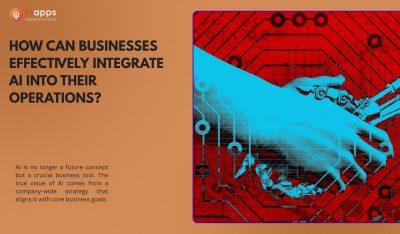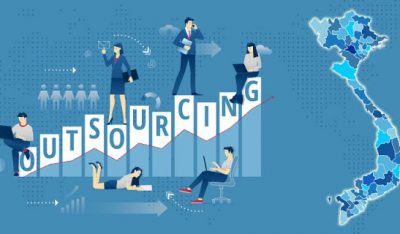- Home
- >
- Offshore News
- >
- What does the word Agile mean? Why choose Agile?
The term ‘agile’ appears to have recently become the most popular business buzzword. The word was coined in the 1970s by software development project managers, but it has since spread to organizations of all sizes and various industries.
Being agile means being adaptable and confident in making rapid judgments based on reliable, accurate, and up-to-date information. It is essential to have a clear plan while remaining flexible enough to modify your approach in reaction to new facts.
The magic of Agile is that it fosters a way of thinking; it teaches individuals how to adapt to a constantly changing environment while simultaneously providing the maximum business value as rapidly as possible. This is vastly superior to merely giving individuals a fixed toolbox of answers, as every problem will be addressed more effectively.
1. What does the word agile mean in software development?
Agile software development refers to software development approaches based on iterative development, in which requirements and solutions change via cooperation among self-organizing cross-functional teams.
The ultimate benefit of Agile Development is that it enables teams to provide value faster, with higher quality and predictability, and with better adaptability to change. Scrum and Kanban are the two most popular Agile techniques.
1.1 Agile Development Methodologies
The Agile technique is founded on the following Manifesto:
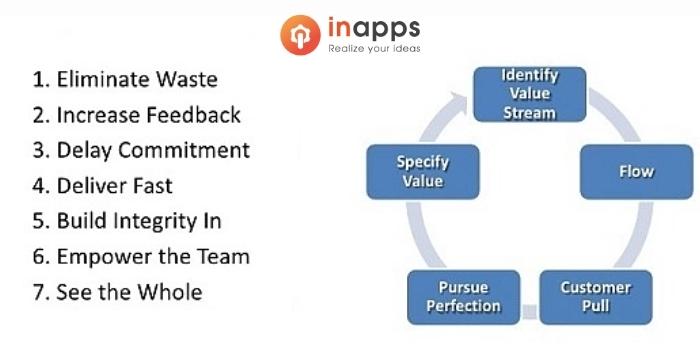
What does it mean to be Agile?
1.2 Agile principles
- The objective is to provide a product that answers the challenge for which it was built by thinking long-term and adding value to the project (instead of churning out software).
- Anything that wastes time, effort, or resources unnecessarily will be deemed waste: paperwork, transferring workers between tasks, management overhead, and waiting for other teams.
- The value of software is judged in terms of usability rather than compliance with specifications. Various concepts will be attempted, tested, and evaluated regularly.
- The sooner an end-product is provided without severe problems. The sooner feedback is collected and integrated into the following version. Customers’ requirements will be met if they are completed quickly – not yesterday’s wants.
- Agile follows the principle of “identify good people and let them do their own work” – this promotes progress, identifies faults, and removes barriers without micromanagement.
- Build quality is kept to a high standard from the start, not only in the finished product.
- Avoid comprehensive talks of issues presently under Development to avoid wasting energy on plans that will only be constructed later.
1.3 Agile Team Structure
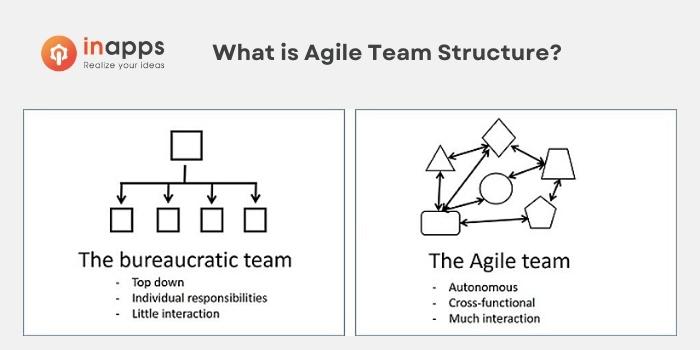
What does agile mean in software development?
- The team will not work hierarchically but rather horizontally, focusing on the consumer.
- The approach facilitates self-organization rather than imposing a set of norms.
- Plans are iterative and constantly changing, as opposed to static and concrete.
- The workplace is an intriguing and stimulating environment channeled via employees who are allowed autonomy.
- The customer is central and not absent; the team’s goal is to meet the client’s business requirements.
1.4 Agile vs. Scrum
Agile Development is a broad word that covers numerous subsets. Scrum is one of these.
Scrum is one of the most popular methods for incorporating Agile into a team, so much so that many people believe they are inseparable. Before deciding on a development methodology, it is critical to examine your business value stream and determine the product/business goals.
If you are unsure or have questions, don’t hesitate to get in touch with us, and we will assist you in selecting the best solution for your circumstances.
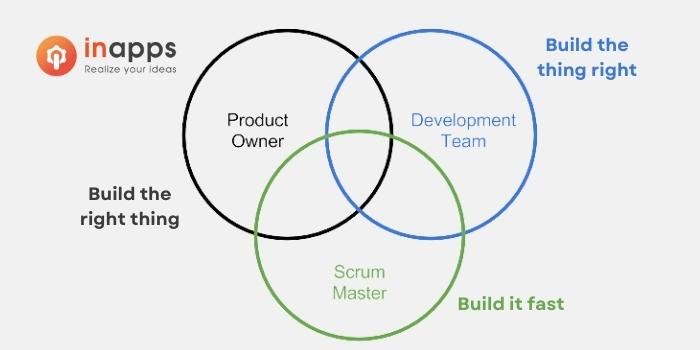
What does the word agile mean? – Agile vs. Scrum
The simplest method to recognize Scrum is by how it organizes a team. The Product Owner, Scrum Master, and Development Team are the three most important positions.
- The Product Owner defines the project’s requirements and ensures that the right product is generated. They understand what is required for potential users and stakeholders and when needed.
- Scrum Masters strive to make the workflow as efficient as possible by removing barriers, supervising, and constantly refining the development process.
- The cross-functional and self-motivated Development Team is responsible for providing technical solutions to business challenges while assuring dependability, scalability, monitoring, and notifying Product Owners/Scrum Masters of any difficulties.
All three jobs combine their obligations to produce a functionally acceptable product on time and competent. A strong Scrum team has a diverse set of talents, and members cross-train each other to ensure that no one individual stifles Development. They are generally close-knit, operate in the same location, and have 5-7 members. The finest Scrum teams approach projects with a ‘we’ mentality, and assisting one another is an essential aspect of the job.
2. Benefits of Agile Methodologies
Things change quickly in a VUCA (Volatile, Uncertain, Complex, and Ambiguous) environment, so having a strategy is crucial. However, you cannot strictly keep the plan regardless of changing external conditions. You can’t use short-termism either.
Agile working supports setting short-term goals for the next three weeks and completing them in sprints. However, these objectives must be supported by a long-term plan. Without this foundation, chaos and confusion will reign, and teams will work reactively.
Prior to Agile, the bulk of software development projects were managed using the Waterfall Model. This approach, on the other hand, has significant flaws:
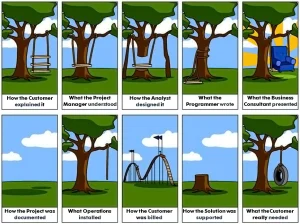
Progress in the Waterfall Method, as the name implies, flows downhill. Projects go through the following stages:
Initiation > Analysis > Design > Construction > Testing > Production > Maintenance
As a result, the final product may change significantly from the initial expectation and design:
- It’s tough to go back and fix anything that wasn’t planned for in the design stage once an application is in the testing stage.
- Until late in the project, no functioning software is produced.
- There is a lot of danger and uncertainty.
- Not ideal for projects that are subject to change throughout development.
The Agile Manifesto was published in 2001 in response to these concerns. The scope of work is flexible rather than defined in Agile, and projects are broken into pieces with frequent evaluations and feedback.
This has various advantages:
- Once project deadlines are reached, managing a lesser quantity of work at once is simpler.
- Regular evaluations and input help to mitigate potential risks.
- Finally, the consumer obtains the desired goods.
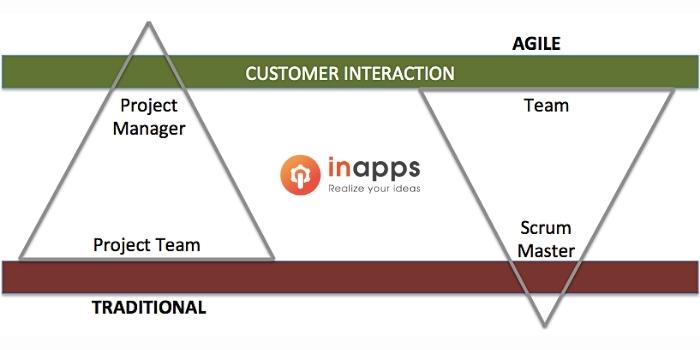
What does agile mean to you?
3. Hire an Agile Development Team with InApps
After understanding what does the word Agile mean and the benefits of this method, let’s find a trusted Agile team for your project.
InApps applies Scrumban methodology for project management – an excellent solution for teams who need the structure of Scrum with the flexibility of a flow-based method or for teams who are looking to transition from Scrum to Kanban.
Scrumban is an Agile development methodology hybrid of Scrum and Kanban.
Scrumban emerged to meet the needs of teams wanting to minimize the batching of work and adopt a pull-based system. A hybrid of Scrum and Kanban gives teams the flexibility to adapt and change to stakeholder and production needs without feeling overburdened by their project methodology. Scrumban provides the structure of Scrum with the flexibility and visualization of Kanban, making it a highly versatile approach to workflow management.
Let’s create the next big thing together!
Coming together is a beginning. Keeping together is progress. Working together is success.






